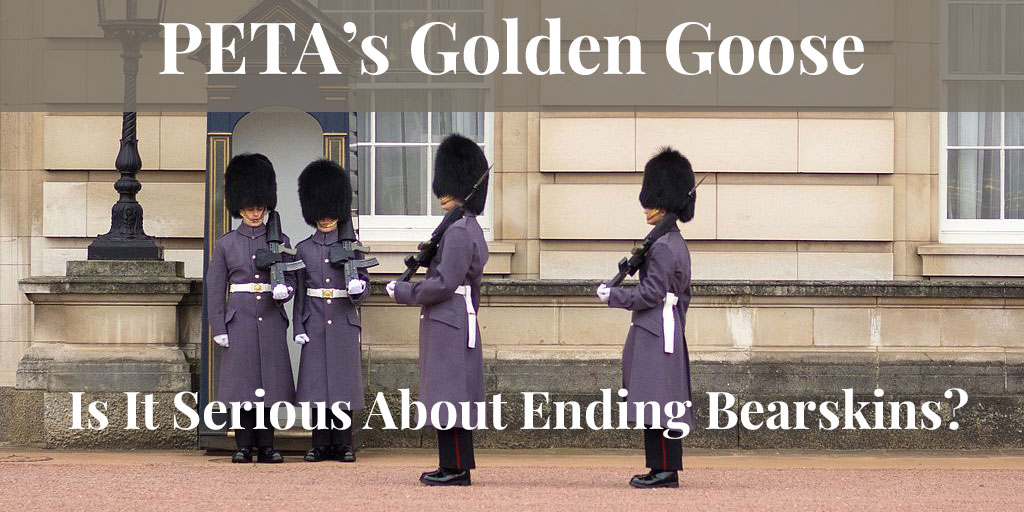
Like any advocacy group, People for the Ethical Treatment of Animals (PETA) thrives on media attention, and when a campaign generates that attention year after year, you keep it going. That’s how it has been with PETA UK’s 20-year campaign to have bearskins removed from the heads of the King’s Foot Guards.
As long as PETA fails to achieve its goal – something it’s “successfully” failed to do since 2002 – this gift just keeps on giving. Indeed, so successful has PETA been at failing, that cynics now wonder whether it wants to win at all, since winning would kill the goose that lays the golden eggs.
Bearskin caps are actually worn by the military and marching bands of no fewer than 10 countries, including Canada. But above all they are associated with British pomp and circumstance, and are a must-see for any tourist visiting London. It’s hard to imagine the Changing of the Guard without them.
For the last two decades though, PETA has been badgering the UK’s Ministry of Defence (MOD) to drop bearskins and go fake instead. True, the synthetic replacements would be made from polluting petroleum, but PETA calls them a “vegan upgrade”, so they must be good for the planet, right?
To no one’s surprise, the MOD has resisted – in deeds if not always in words. And all the while, PETA has milked the to-and-fro for its endless supply of free publicity.
Life of Its Own
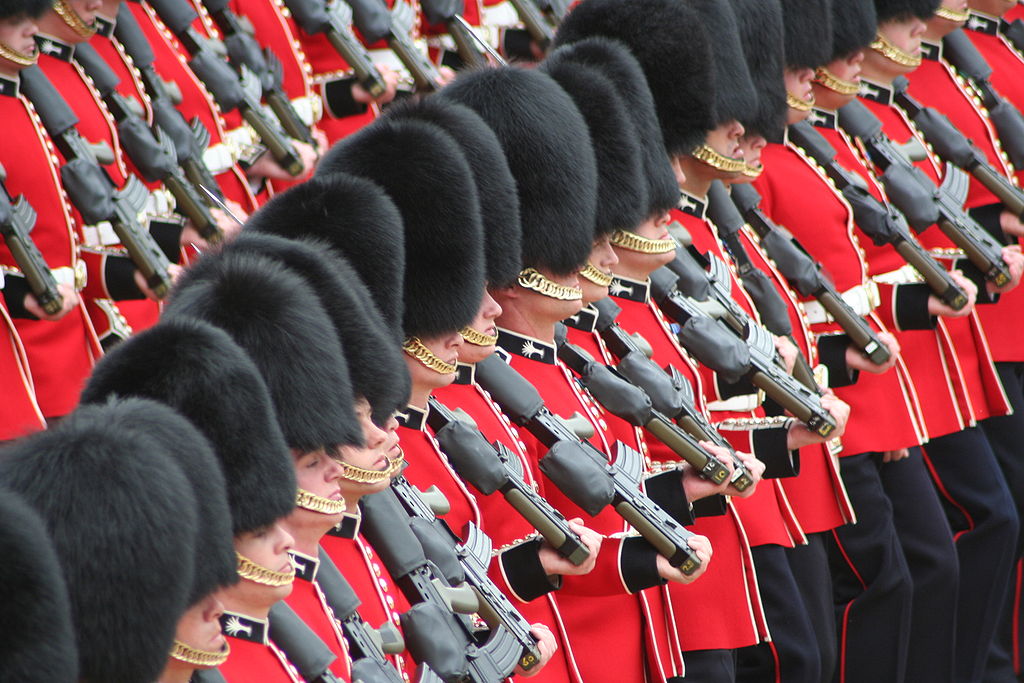
When PETA started this campaign, it probably never dreamed it would take on a life of its own.
Its humble beginnings came straight out of the standard PETA playbook. Pick a target (the Guards), trot out the usual stories about how terribly animals (black bears) suffer, then see if the media would take the bait.
Not interested, said the MOD. The Guards took “great pride” in wearing an “iconic image of Britain”, and wearing plastic just wouldn’t be the same.
But unlike the MOD, the media were very interested, because the story provided a perfect mix of what readers craved. The visuals came easily: a spectacular photo (or five, for the tabloids) of Guards on parade (just as we have done), with the Queen or other prominent royals for good measure. Then the text need only mention the royal family and suffering animals to provoke a range of strong emotions, and a PETA spokesperson would happily provide the mandatory quote while blowing their own horn. Perfect for selling papers, and perfect for PETA.
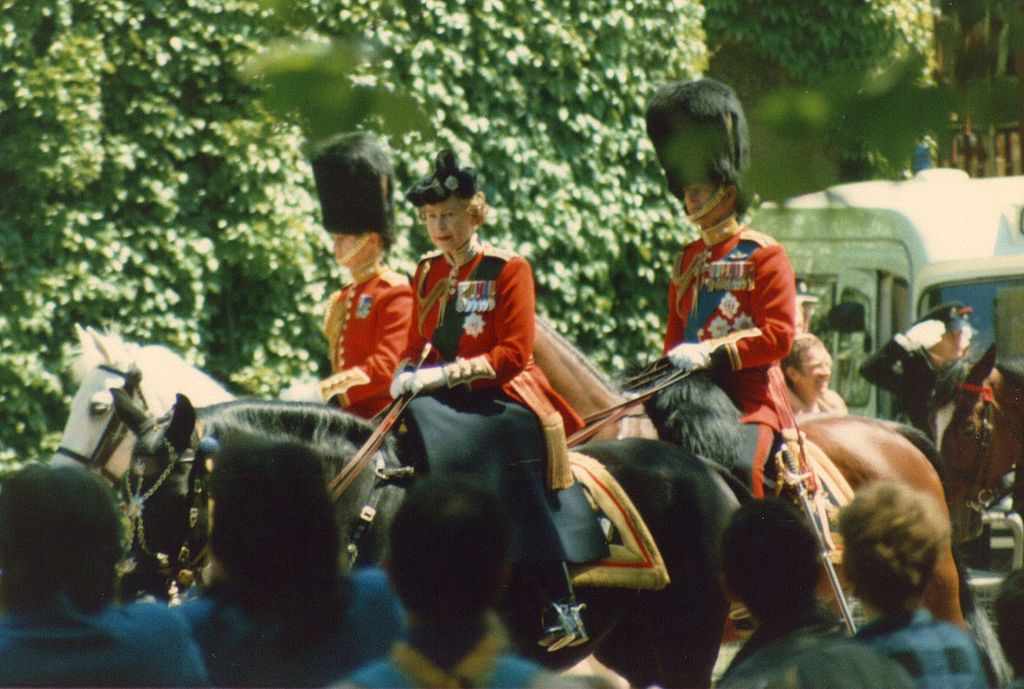
Indeed, the free publicity came so easily that PETA just had to keep it going, but how? Then it had a brainwave: offer the MOD a fake alternative specially developed to meet its requirements, and hope the MOD played along. Crucially (some say naively), the MOD did just that, agreeing to test whatever PETA came up with. PETA’s foot was firmly in the door.
And so began PETA’s partnership with fake fur maker Ecopel, knowing that if they could keep supplying prototypes, headlines would be guaranteed at least until the MOD capitulated, and that could take years.
Since 2015, the MOD has conducted tests on four iterations of fake bearskin, and each time determined that they don’t meet requirements. PETA, meanwhile, says its latest offering meets, or even exceeds, those requirements, and is now threatening legal action, accusing the MOD of failing to fulfill its “promise” to carry out a proper evaluation.
All the while, fresh publicity is generated for PETA every time photos of glamorous Guards and royals adorn the media. And this will continue for as long as PETA keeps feeding the media fresh hooks to hang their stories on. Next, presumably, will be the lawsuit itself, but whether it is thrown out or not, PETA will be there, lapping up the attention.
Trans-Atlantic Cooperation
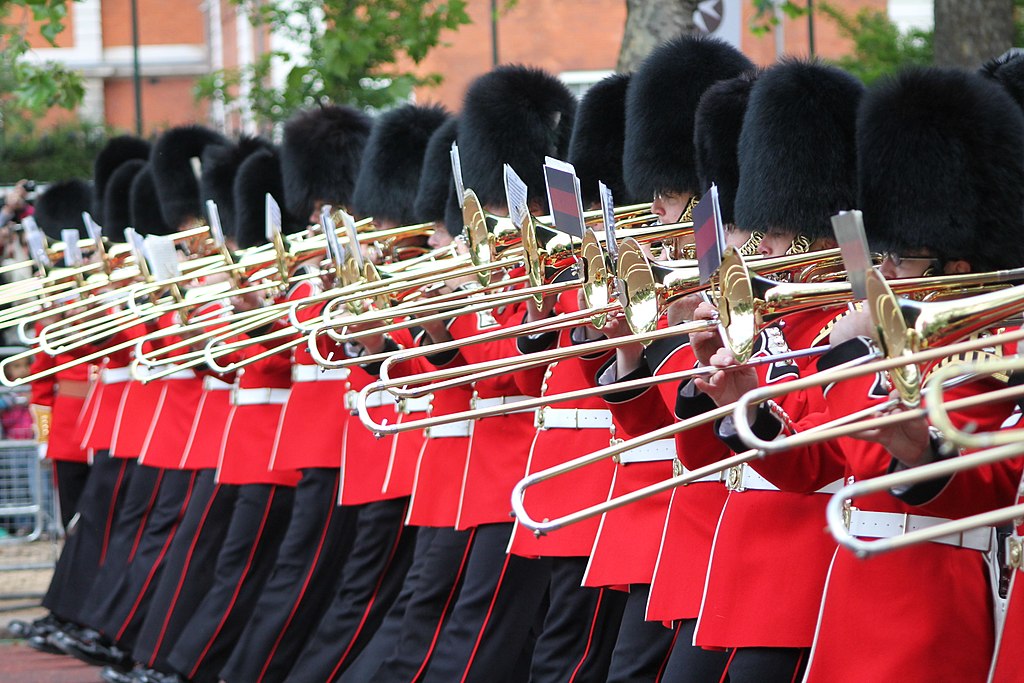
Of course, the MOD realises now that it’s painted itself into a corner, especially when it has to answer questions in Parliament, as happened this July. So all the fur trade can do is ensure the MOD has the best information available.
Particularly concerned is the Fur Institute of Canada (FIC), since the bear pelts used in the MOD’s bearskins are sourced exclusively from Canada.
“The good news is that the MOD are completely on-side,” says FIC executive director Doug Chiasson. “They understand that Canada’s black bear harvest is strictly regulated and informed by both the best available science and Indigenous knowledge. They know that black bears are abundant here, and that they must be managed to ensure the health of the overall population while limiting human-wildlife conflict. And particularly important in the battle against PETA, they know that we don’t kill bears to order. The same number of bears will be hunted whether the MOD buys them or not.”
SEE ALSO: Doug Chiasson: What does the Fur Institute’s New ED Bring to the Table? Truth About Fur.
The FIC and MOD have also discussed all the benefits of natural fur compared to the petroleum-based variety. It’s a renewable natural resource, fur garments last for decades, and they biodegrade at the end of their long lives.
“They get all this,” says Chiasson. “They get that synthetics are polluting, that microfibres are piling up in our oceans and even in the food chain, and that they don’t biodegrade. They get the importance of wildlife management, and of adherence to the Convention on International Trade in Endangered Species.”
But that doesn’t mean it’s time to relax, he cautions.
“Just because the MOD has all the arguments on its side, doesn’t mean we’ve won. Under the current Conservative government, bearskins are probably safe, but with the UK’s departure from the EU, pressure is mounting to ban all fur imports. If Labour wins the next general election [to be held no later than January 2025], the future of bearskins will be up in the air. So we must remain vigilant, and continue to ensure that the MOD and other parts of the UK government have the most accurate information at their fingertips to fight the disinformation from PETA.”
Meanwhile PETA UK just keeps counting all the golden eggs this goose has laid, and wondering how long it will live. Obviously the MOD doesn’t want PETA to win, but maybe PETA is in no hurry to win either!
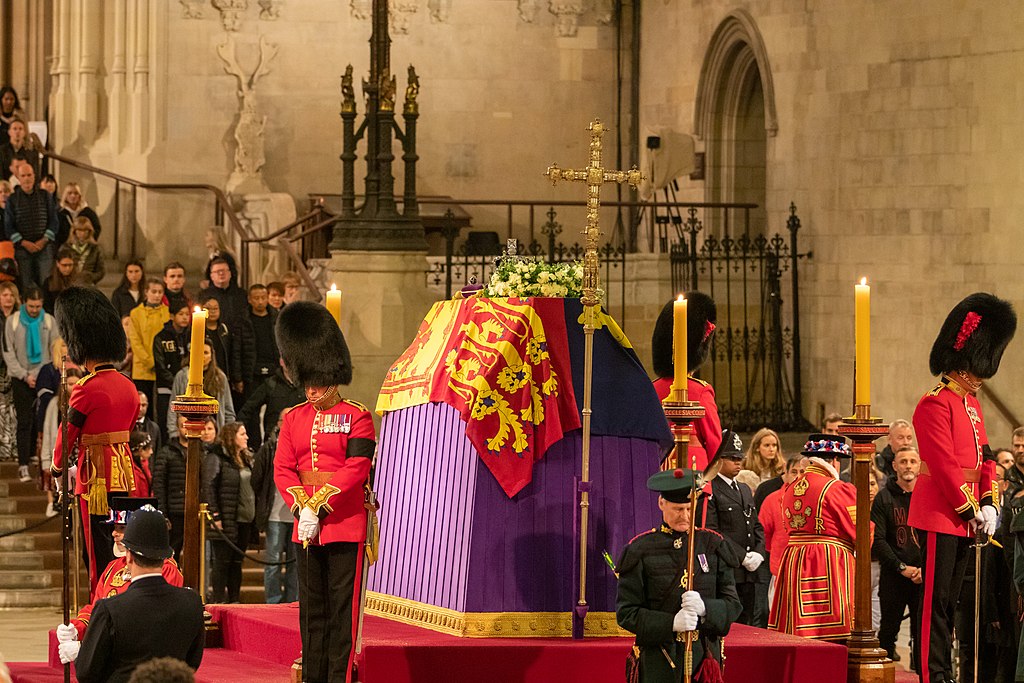
***
To learn more about donating to Truth About Fur, click here.










